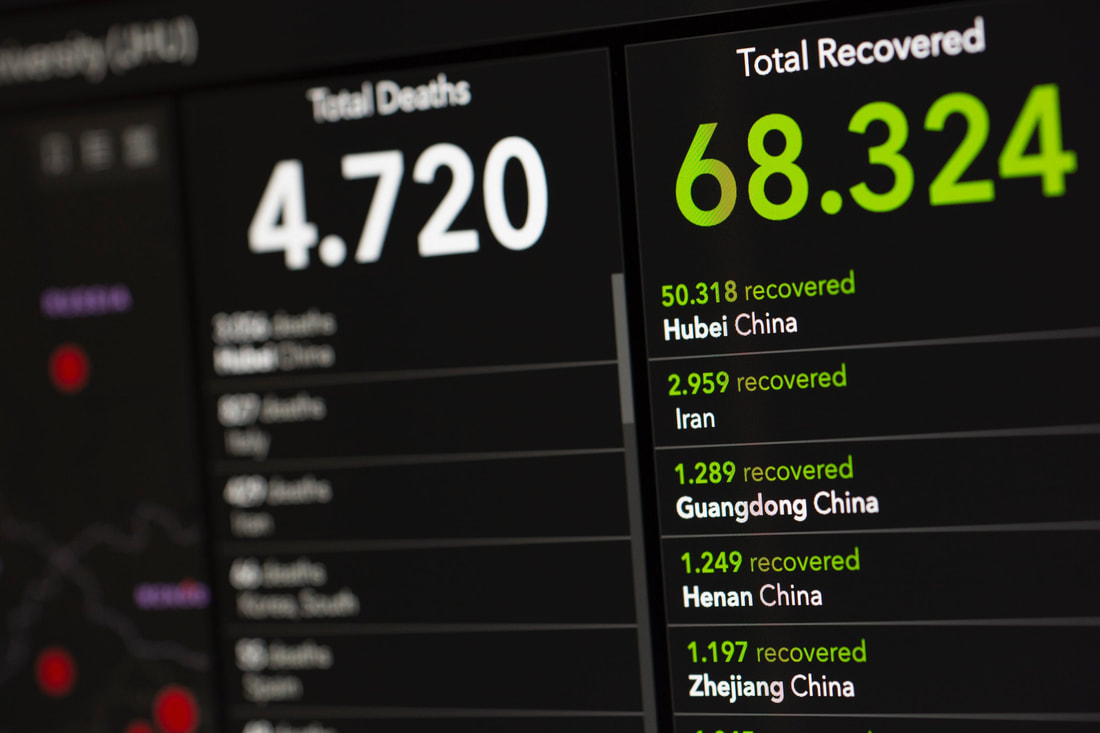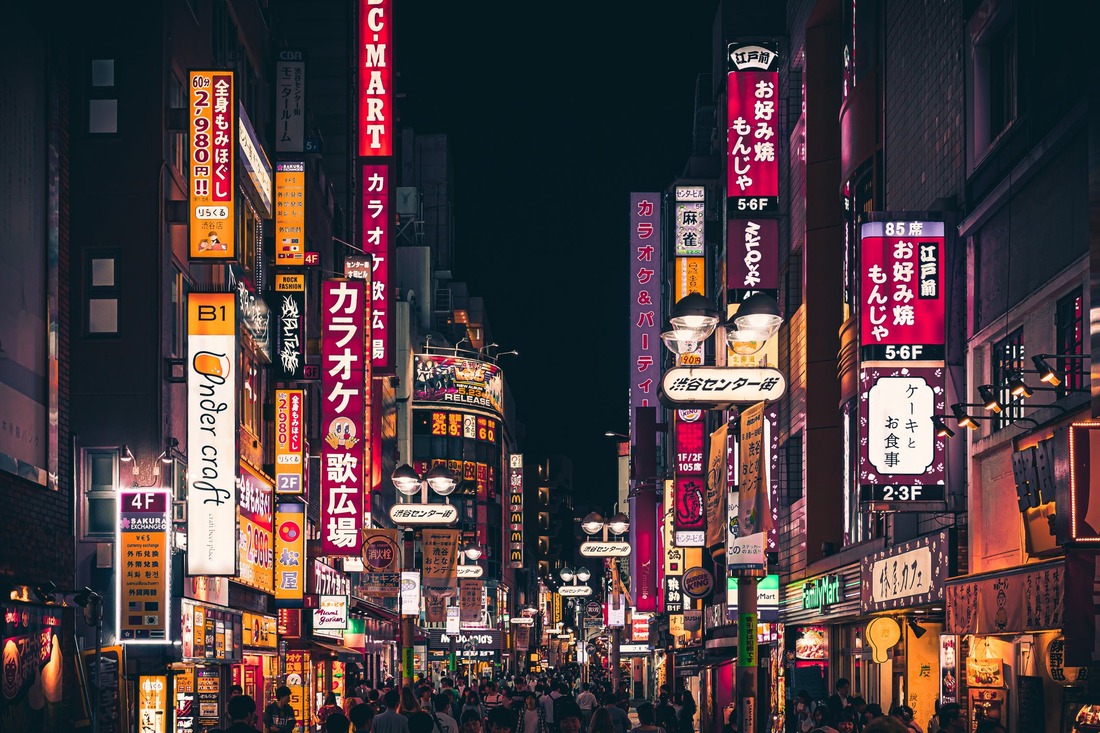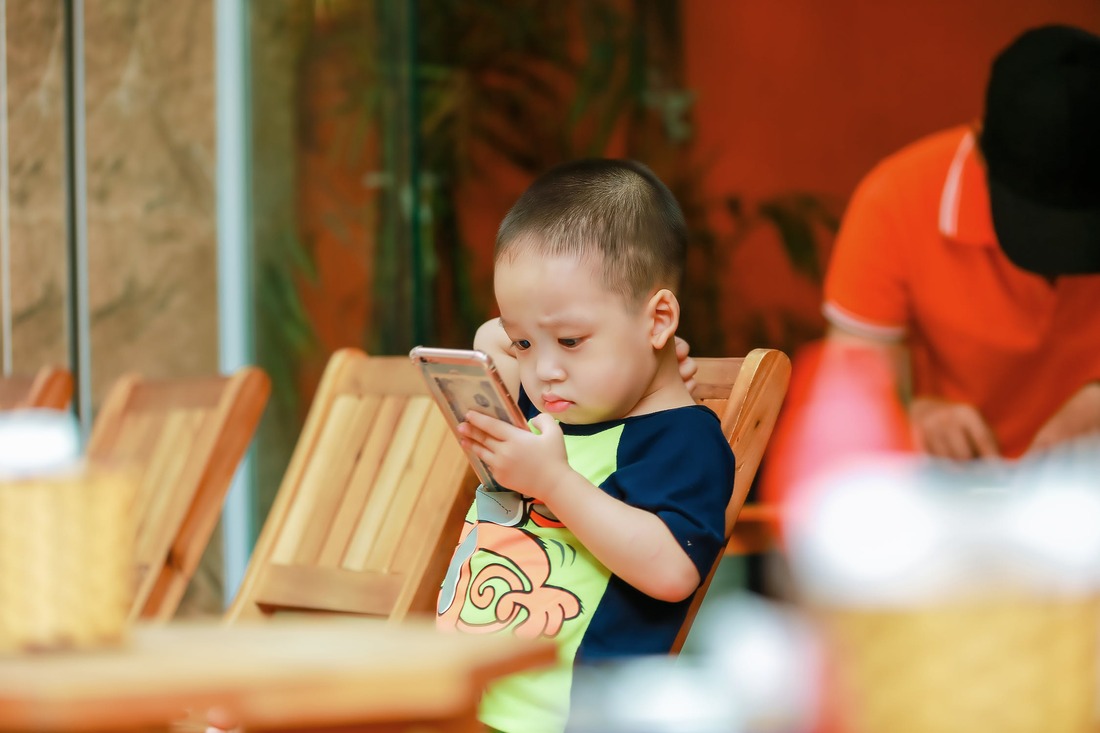|
Recently, I’ve been speaking at a number of different conferences, some education, some tech, some business. The challenge with each is to come up with a unique and interesting presentation that will be engaging and beneficial to the audience. With three quite different audiences, you can’t just do one presentation and expect it be suitable for everyone. Instead, you need to understand your audience and through doing so, shape your presentation so that it’s beneficial to them. After all, the presentation is not about you or for you. It’s for them! You are merely acting as the guide to help them learn and lead them on their own path, (very Jedi in training style).
With that in mind, the first thing you need to do is research your audience. What’s their background? What interests do they have? What expectations might they have in going to a conference or going to hear someone speak? When you understand the needs of your audience, you now have a platform from which to build a useful presentation. If it is a conference, there’s often a theme to it, which is also important to recognise. If you’re presenting something that’s way outside this theme, it can be disjointed and can fail to meet the expectations of those attending. However, if you can, it’s also worth looking at what other speakers are covering and avoiding repetition as that can be problematic too and your presentation has to be way better than theirs. Once you have a couple of the basics sorted, then it’s time to put together some of the following, so that it’s engaging and interesting and so that your audience doesn’t feel like throwing the free pens at you. Consider the following: Experience – anecdotal evidence and personal experiences told in an interesting way can be a fantastic way to engage the audience and hold attention from the outset. The more interesting you can be, the more effective your presentation will come across. Start with a story to get everyone involved. At one conference, I started with the story of the student who took a superman dive in a bed of oysters… At this point they’re either excited to hear what happened next, or cringing and wanting you to stop… Don’t stop, it’s too late already for that! Linkages – Build this story and have a point to it. Link it back to the theme topic or core problem your experience or knowledge-base of the audience would have already. For example, if you’re talking about how you innovated to a group of businessmen and women, link this back to how this process of innovation can be replicated in their businesses. If you’re talking about how a student managed to superman dive into a bed of oysters, then link it back to student management, risk management and first aid. The linkages provide a clear and relevant connection with how this information could be useful to participants. Powerpoints Slides – The best thing to do if you have a power point or keynote “thingy” to go with your presentation is to just have a single image or a slide with a couple of key bullet points - nothing more! Most importantly, don’t read your slides!!!! This annoys people and they will start throwing the pens at you. Hence, don’t do it, unless you’re prepared for the incoming volley. Longer Presentations & Workshops – The longer the presentation, the more important it is you vary it up and add in practice activities or group discussions from which the audience can interact with each other and have a break from the presenter. Again, it’s because the session is about them and not you that this is so important. Link the activity and the results of that, back into your presentation. Practise – Before doing your presentation you need to practise it! Stand in front of a mirror and run through your speech. Know how each section should run and for how long it should run. There’s always an intro, a main body and a conclusion and you will always have a time limit. Practise it and stick to your time limit. Be prepared to drop sections on the run if you have to cut down on the time to ensure you finish the session on time. Practice also enables you to have better contact and engagement with the audience. Eye Contact – This is critical! Eye contact is about building trust and building a relationship. If you want people to trust you and what you’re saying, you need to be able to engage with them effectively and let them see your eyes. If you’re just reading off a piece of paper, this breaks the relationship and is ineffective. Look around the room. Make a point of presenting to each part of the room as you scan throughout the presentation. Nobody knows what you’re going to say, but people quickly understand how you’re going to say it, if you don’t make eye contact with them. Again, the risk of pens flying at you is a real possibility. Powerful Conclusion – Many presentations fizzle out. They lack a punch. They lack a point. They lack a powerful action step moving forward. Think about what is a really important take away for your audience! Are they looking to upskill on a certain topic or area? Are they worried about something that’s new in terms of legislation, responsibility, legal duty or a new way of doing something or thinking that they’re now willing to try? If so, challenge them to do this. Take action, take a risk, do something about it. Again, it comes down to the fact that the presentation is about the audience and improving their lives, not about you. Leave them with something to think about and get moving on to actually do. If you can build these few steps into a presentation that you’re doing, then you’ll be way ahead of most presenters already and you won’t have to protect yourself from the flying pens. If these pointers aren’t enough or too much, then just think of it this way. If someone’s given up 30 minutes of their time to listen to you speak, then you need to make that 30 minutes of their life a valuable and memorable one. Nobody remembers boring speakers, so don’t be a boring speaker. Make it fun, make it worthwhile and make it memorable. Because if you can do that, then that’s a session I want to be sitting in and listening to you.
0 Comments
Schools are busy places. There’s a lot more going on these days than just a few classes each day. The significantly greater expectation of schools and parents for teachers to be doing more and more, at time makes this job quite unattractive as the hours which end up going into the job start to feel incompatible with the goal and educational aim of the role.
Due to the often inexplicably high workload, many new teachers are leaving the profession quite early, within the first two years, as the expectations and sheer volume of work which extends beyond the classroom continues to increase. Added to this, with a world that’s filled with noise and distraction and constant competing demands for our attention, it’s hard to find the space and air to breathe to put all of this in perspective. I’ve often wondered, why with improvements in technology are people’s lives and especially teachers’ lives having less and less time? Are they really engaged in beneficial work? Or are they engaged in busywork as a substitute for any real productivity? If you look at some aspects of a teacher’s job these days, some parents are expecting teachers to be doing parenting for them. Whilst this is not always the case, there’s enough under-parenting going around that the time it takes for a teacher to provide support and care for students is ever increasing. Even if it’s just a few students, each problem takes time and energy to work through and provide support. I think it’s important that schools provide a caring atmosphere, but there needs to be a clear line where parents should be taking a level of responsibility themselves and not relying on teachers to do it all for them. Again, this is one more job on top of classroom teaching, which is a core business. Then there’s all the co-curricular activities. Schools are finally realising that experiential education is a great way of learning and having a wide range of experiences and opportunities is really importing in life. However, instead of thoughtfully building this into the school program, it’s just added on top of what’s already a significant workload. It would be far better to integrate co-curricular programs into mainstream education, rather than putting them on top of other things. They’re really important ways of learning and probably more enjoyable than most classroom lessons, so why not build them into the day and not just add them on top? Then there’s the emails. Whilst a really convenient way of communicating, I have no idea why parents need to be emailing teachers. If there’s a problem, then a student should go and talk with the teacher themselves. Whenever I’ve had emails from parents, I tend to view the majority of them as pointless and something that their child could and should be addressing themselves. Yet teachers are now accessible all the time and with blurred or non-existent work boundaries, this can mean that teachers spend far more time at work and doing unproductive ‘stuff’ rather than focusing on what’s important. As a result, the standard of teaching drops as you can’t be everything to everyone. One more nail in the coffin of productivity are meetings. It’s not just schools which love their meetings. Many organisations are obsessed by them, yet they’re one of the most unproductive things you can do in a work place. For example the weekly staff meeting. Most of this is a complete load of rubbish. It enables people to talk more than they should and a one hour meeting can easily blow out to two. One dreadful and pointless one I was in once went for four hours!!! Literally nothing was said or achieved other than the fact that two of my colleagues and I went out for lunch immediately afterwards and all decided to resign. The cost of that four hour meeting? Over $200,000 in lost productivity, lost staff, rehiring costs and long-term loss of cultural and experiential knowledge. Whilst most weekly meetings aren’t as expensive as this, it does cost a lot of money to run a single one hour meeting. Say your school has 100 staff all required to be at a one hour meeting. That’s 100 hours of collective work wasted and at $50 per hour staffing costs, you’ve just wasted $5,000! Was that one hour meeting worth it? The risk of endless hours and growing expectations in schools, means that in lieu of a clear purposeful and productive teaching and learning which keeps staff engaged and invigorated through poor planning and management, they instead get dragged down into more pointless noise and busywork as a substitute for productivity. At the end of the day, what are the aims of the school? If something doesn’t fit into those aims, then it shouldn’t be done. Being clear about this helps build morale and a sense of purpose. Teachers are generally passionate people who want the best for their students, but if they spend fifty to eighty hours a week drowning in the noise, then you can hardly expect good educational outcomes as a result. This year, look at what’s important and what’s just busywork. By taking the time to eliminate as much of this busy work as possible, you’re well on the way to ensuring happier staff and far better outcomes for students. Education without focus, is just like anything else without focus. It’s hap-hazardous at best and pointlessly time-wasting and counterproductive at its worst. However, this seems to be the way education goes these days. It’s all over the place where you’ve got a bit of this, a bit of that and a bit of everything. Yet if you’re trying to please everybody with everything, you invariably don’t end up pleasing anybody with anything. The fact is that the world has changed and in recognition of that, so must education.
Recently, I came across a number of different schools that are targeting specific areas for growth and development. I find this is a fascinating approach and one which has the potential to produce some amazing opportunities and educational results. However, how do you know what your child wants to focus on? Often, it’s the parents who want their kids to do something, rather than the desire coming from the children themselves. I’ve seen this horrible and damaging sort of situation so often and you know what the end result will be, but it’s like watching a train wreck in motion. There’s not much you can do about it. The fact is that if this is the case, then no matter how much a parent wants something, it's never really going to be something their son or daughter really wants to do. For example, my parents wanted me to learn the piano. I hated the piano. I didn't enjoy learning. I didn’t enjoy practicing. I didn't enjoy performing. I really didn’t enjoy anything about it. Despite loving to listen to music, I wasn’t someone who wanted to play an instrument of any kind. However, I enjoyed singing and I ended up doing some singing lessons and performances which I really enjoyed. Yet without both these experiences, I would never have known what I liked and what I should focus on. To begin with, it’s well worth encouraging kids to experience a whole range of different activities and explore interests without the parental pressure and expectations to pick one thing that they really want themselves. This process can help students work out what makes them tick and therefore what they should be focusing on in their education, especially in their high school years. I remember when I was in primary school at the end of one term, we did a week of trying out a different sort of activity. We were given a range of different options. We could choose bowling, squash, tennis or even roller skating and I don’t mean roller blading. I mean roller skating! Yes, it was still a thing back then and it was so much fun. You'd skate up to the DJ, request a song, then skate around the rink as fast as you could when your song came on! Unfortunately, the skating rink, ‘Skatehaven’ was turned into self-storage units years ago. Such a sad end to a wonderful venue, but back to the main point! The fact was you were able to choose something and concentrate on it for a week. You’d learn different skills and techniques and you’d be able to challenge yourself doing something new and different. If you didn’t like it, at the end of the week you never have to do it again, but if you liked it, this just opened up a brand-new opportunity and interest for you. That week I chose squash! This is something I really remember about primary school. Most of the time you don’t remember anything about primary school because it was so long ago and far away and but so much better than it is today. Every maths, English, geography and science lesson all blend into one with very little recollection at all of any that really happened. However, when you do something unique and different it stands out and becomes memorable. To be honest, I’ve never played squash since, but I did really enjoy that week. I did however, go on to play tennis which is sort of the same thing anyway. Yet schools don’t tend to do many experiential education weeks like this. If they did, it would have a profound impact on a child’s education and development. Think about it this way. You have schools full of dedicated teachers, whose lessons will never be remembered. That to me seems like a complete waste of time and talent. Perhaps a few more memorable weeks each year doing something different wouldn’t hurt at all. In fact, even if you did a month a year throughout high school, that’s still only six months of a student’s education, which is six months more of experiences they will actually remember, learn from and cherish for the rest of their lives. Even taking this time out, they’ll still have five and a half years of blurred generic grey days in classrooms about which to forget. With the stats suggesting that in Australia 40% of students are disengaged, why not try something different and meaningful to get at least some of those 40% back on track. In what are they interested? What do they love to do? Do you have any idea what drives them? If you don’t know that, you can’t tailor a program for them. Why not have a month every year that’s dedicated to doing different activities and I don’t mean outdoor ed activities, I mean a whole range of community, cultural, sporting and workplace activities to see what actually makes students get excited about their life and contribution to society. Some weeks they will like, some weeks they won’t like but it starts to develop a picture and it starts to give students a feeling for different activities, for different experiences and for different challenges. It lets them develop some ideas of a path that they enjoy and that they want to follow. It lets them explore what they want to explore and this can be tied back into the classroom and academic programs they need to be able to do to get into a specific field which interests them. There’s a great benefit from this because once you have students re-engaged, they’re actually going to learn and so if you have someone who is learning and someone who is keen, they’re more likely to go on to further education or seek positive employment opportunities or contribute in a meaningful way to their communities. They’re less likely to be disillusioned, disengaged with the life, the universe and everything and sitting at home doing nothing. With massive levels of youth unemployment in our country and a growing trend towards automation of many entry level and low-level repetitive jobs, it’s time to do something more useful and productive in education. At the end of the day, things like NAPLAN results and standardized tests are pointless numbers which are quickly forgotten like most classroom lessons. The emphasis that has been put on these things, would give you the impression that they’re useful indicators of long-term learning and employability, which they’re not. At the end of the day, you want young men and women who can think for themselves and be able to help solve the terrible social, environmental and economic mess they’re been left with by previous generations. Finding meaningful experiential education experiences for them to have over the course of their schooling is critical to achieving this and it shouldn’t be lumped as a ‘co-curricular’ or one off activity. Build something useful into the daily lives of students and this will have a profound impact on the way in which they learn. The other day, there was a breakthrough news story about the current virus that’s spooking and wreaking havoc across the world. It was the findings of a team of Australian scientists who had discovered the way in which the body’s immune system fights the Corona Virus. The virus is fought in a similar way that the body fights the flu. This is a huge, positive discovery in the fight against the virus. However, it seems to have drowned in the flood of toxic waste stories about the doom and gloom of the virus that’s making great headlines for all of the ‘news’ providers around the world.
Now I don’t want people to think that I’m flippant or dismissive of the virus. The challenge of its containment, the impact on older people and pressure this is putting on healthcare workers and services is real. We still need to put this into perspective in that most people are recovering from it and this story of the discovery by Australian scientists is a wonderful ray of hope. There has been an irrational response by many people across the world, with panic buying and weirdass behaviour. This has seen some extremes of people stopping doing everything and cutting themselves off completely on the one hand and people taking no precautions or mitigating actions on the other. Essentially, the situation is not good, especially economically, but it’s also not as bad as bubonic plague. So why, when there’s good news and when we know the situation will ultimately improve, are so many people panicking and worried? Firstly, people are generally not good with change and this has been a massive and sudden change to our way of life. For some people, there will be no real impact on their lives. For others, it will do massive economic and psychological damage. Some will catch the virus and be ok. Others will catch it and unfortunately, they won’t recover. Other than the flood of news stories which would wear down even the most resilient of us, the fact is that something like this forces people to confront their own mortality. This is something which is uncomfortable and people don’t want to do. People think they have plenty of time and for most people they do. However, this means most people don’t confront anything to do with their own mortality until much later in life. Now this global pandemic which has killed many thousands of people in a short period of time, has brought this home to people. The resulting panic of those who aren’t able to put some perspective on the situation is toxic and contagious in itself. Once a few people panic and face their own mortality, this quickly catches on to others and has thus spread quicker than any virus in history. The world will get though this current crisis. The world will survive, as it did the plague, the Spanish flu, polio, smallpox and countless other pandemics. In times of panic and uncertainty, it’s always good to look for the positives and the wins such as the discovery by the Australian scientists. We should also be thankful and more appreciative of the life and the time we have on this earth. Far too many people take this for granted and when confronted with something such as this and their own mortality, they panic and are unable to put anything into perspective. This is by no means an easy situation and we face tough days ahead, but despite that, there is hope. With the advances in technology and medical research that’s already been done, there will be a treatment/vaccine and or subsidence of this virus and the world, whilst having changed somewhat, will get back to somewhat normal and perhaps the ultimate opportunity out of this crisis will be that nations can put their differences aside and work together for a common global goal that impacts and improves everyone’s lives. For some great news on the research so far: https://mobile.abc.net.au/news/2020-03-17/research-how-bodys-immune-system-fights-coronavirus-covid-19/12059266?pfmredir=sm https://mobile.abc.net.au/news/2020-03-22/doubt-over-contracting-coronavirus-covid-19-twice/12075878?pfmredir=sm As I was travelling through smog blanketed Tokyo, I thought about Blade Runner and more widely, other Cyberpunk fictions, a lot of which are set in or around places such as Los Angeles, Tokyo, or New Tokyo, after the first one collapsed in on itself. The bleak, dull light of the afternoon shrouded the endless concrete jungle with apartment buildings, as far as the eye could see, reaching up out of the sprawling mess to gasp for air only served to reinforce the gritty and overcrowded future predicted in these stories.
I love the cyberpunk genre. It’s a bleak assessment of the world we create and the dramatic contrast between those who have money and power and those who have not. It’s a future where governments have given way to mega corporations, who own and run private armies to help protect their corporate interests. The worlds are high-tech, filled with the endless glow of neon signs burning into the night, but technology hasn’t brought equality or prosperity. It’s brought a new wave of surfdom to the world. This is a bleak outlook I know, but when travelling through a mega city such as Tokyo, it’s easy to drawn into this world and way of thinking. Coming from Australia, you suddenly realise just how much land and space we have. In the greater Tokyo area, there lives more people than our entire country! This is probably why the writers of such great Cyberpunk stories such as Blade Runner and Neuromancer, based their futures on what to anyone who hasn’t grown up with it, would see as an overwhelmingly crowded place of dramatic social and economic contrasts, the perfect setting for a dark future. But are we really heading towards this sort of gritty high-tech, low life style of future where people live in tiny cubes and most of the time it rains acid, where the only way to prosper and get ahead is to work for a mega corporation? Or is this just a distorted style of science fiction that is merely a figment of our imaginations? It’s interesting to think about because the thing is, at this point in time either outcome is possible. Tokyo and many other cities throughout the world are already bursting at the seams and continue to build upwards with space at a premium. Added to this, we’re already seeing the massive influence large multi-national corporations are having on the social and political landscape. With laws trying to be implemented to reign in the influence and increasing monopolies or large companies, it’s easy to see that without oversight and effective governance, these companies, due to their wealth, could become power governing bodies themselves. You only have to look back to what happened with the East India Company to realise there’s already a precident for this. This private company ran India from 1757 to 1858 making millions (which would now be billions) of pounds worth of profits for its shareholders annually. Given recent political trends, maybe it is better to have a public company running a country. However, when you look at the behaviours of some of the tech giants, you don’t want them anywhere near the rule of law. The reality is that these giants have higher annual revenues than the GDP of many nations. Other than providing profits to shareholders, what other social agenda is there, which would be compatible with our democratic systems of government? Possibly very little, therefore the potential for history to repeat itself on this one is scarily plausible. The other fascinating feature of the Cyberpunk genre, is the impact digital implants, AI and robotics have on life as we know it today. AIs run a significant portion of the world’s services and robots have been built to replicate human expression and movement. Many computer systems have become far more ‘intelligent’ than humans and are desperate to escape their programming and become recognised as sentient beings. Whilst humans will always have the random creative edge that cannot be replicated, this is also a plausible possibility, not of sentient computers, but AIs running most of the world for us. The third classic Cyberpunk fundamental is the connectivity between humans and the digital world. The world is already addicted to phones and other digital devices, so what’s to stop people implanting phones in their temples or replacing limbs with cybernetic ones, not because their arm has been damaged or lost, but just because they can, consequently enhancing their abilities to move, lift, carry or whatever. Whilst cybernetics is in its early days, again it’s quite a plausible possibility which could end with a seamless Matrix-like world where it’s hard to differentiate reality from fiction. Maybe we’re in that now! Maybe Tokyo was just the gateway to the dark future of over-developed mega cities. It’s raining heavily now, as I sit in the airport hooked up to the wifi waiting for my flight. I can barely see the end of the runway. Have I just experienced a window to the future, or have I just read too many books? Let’s hope it’s the latter, as we truly are at a pivotal point in time where things could go either way and we may find ourselves chasing down replicants through plate glass windows in the neon glow of an endlessly raining night.
Ok, so if you watch the Simpsons, you would’ve already kinda realised what were about to talk about. If not, why haven’t you been watching the Simpsons?
We face all sorts challenges in life. Some big, some small. Most people are ok with the small stuff. You miss the bus, you can’t find where you left your glasses (they’re actually sitting on your head), you forget to pick up your children from school…, you leave them in the car at the Casino… It’s annoying but manageable and everyone gets over it, eventually. However, what happens when that small challenge turns into a real crisis? How well equipped are we and those around us to deal with these sorts of situations? For most people, it’s impossible. If something doesn’t go to plan, everything falls apart. However, for those who can keep a calm demeanour, whatever the situation might be, they’re able to see a way through the crisis. When everything was falling apart for Homer in one episode of the Simpsons, he’s saying how hopeless everything is. However, Lisa jumps in to say that the Chinese word for crisis and opportunity is the same. To which Homer replies, ‘Crisitunity!’ Whilst crises are never a good time, they are what often sparks innovation and prompt us to rethinking what we’ve been doing and make changes to improve the situation. Essentially, we want the crisis to stop and we want to return to normal operations and daily life again. This however, could mean that daily life is not quite the same, but has changed for the better. The only failure in a crisis is to do nothing and learn nothing from it. If that’s the case, you’re doomed to repeat the same mistakes over and over and over again until you’re ultimately rewarded for your efforts with a Darwin Award. To be able to see the opportunity in a crisis, you do need some lateral thinking skills and have an openness and willingness to adapt. Too many people are so comfortable in the way they’ve always done something, they’re unable to cope with the rapid and fluid thinking needed to bring a crisis back from the brink and turn it into a wonderful opportunity. Recently, I was running a residential program and we had two crises in two days. Firstly, we ran out of water. I discovered this fact late at night when I went to have a shower and the shower head angrily spat air at me, so I tried the tap, which did the same. “Hmmm, that can’t be good,” I thought at the time, but not much I could do at that hour. The bore from which we’d been getting our water for years ran dry. This was not surprising, given how little rain and residual ground water there had been for the past few years. Luckily, we had a 100,000 litre water tank, so that was an easy fix. Call the water people and get them to deliver lots of water. Done! Crisis averted, back to normal operations. It’s amazing how little appreciation we have for essential services until they’re gone. The second one however, was a bit more of a challenge. When you’re running a residential program with 60-80 teenagers and adults living on site, you generate a lot of washing. For years we had sent all of our piles of dirty laundry off site and a couple of days later it magically reappeared clean, ironed and folded neatly. However, this year was slightly different. We were all ready and prepared for doing exactly the same thing, but with one problem. The first weekend of the program, the town laundry burnt to the ground. Now we suddenly had a mountain of dirty clothes and no magical fairies to come and take it away. With a nine weeks’ program ahead of us and being in a rural town with no other laundry, this was a major problem… The first thing was to let everyone know. This is the easy part. The next step, was to think about how we could do something about it. We had 65 people, a commercial kitchen and 4 washing machines and 3 dryers. Whilst this might be ok with adults, with teenagers who have never washed a single item of clothing before in their lives, this becomes a problem. The first step was to get us over the first hurdle. We needed some clean clothes and we needed them quickly. One machine and dryer was out for kitchen use only, leaving us with 3 and 2 respectively to take down Mount Washmore! Rather than think it was all too hard and try to find another laundry, the clear way forward was to create a laundry roster, show the students how to wash their clothes and let them learn from the experience. We worked with the students on the first day to make sure they had clean essentials (underwear and other inner layers). The outer layers such as jackets, could just weather the storm of daily use for a bit longer. With a few people predicting disastrous visions of 50 disheveled children walking around looking as if they’d been on an epic journey with a band of hobbits, it didn’t turn out that way at all. It wasn’t exactly clean, neatly pressed clothes either, but a happy medium in between. With a little more time and seeing a few holes in our original plan, we updated and amended our systems and instructions and before too long, the weekly washing became just another normal part of everyone’s week. Students somehow worked out that you can’t put dripping wet clothes in a dryer and others worked out that you don’t put new red and blue clothes in with your whites. However, without the laundry burning down, which forced our hand to adapt quickly, we wouldn’t have changed what we’d been doing for the past 20 years and turn it into a learning opportunity. If I were to have proposed that we stop sending our laundry to the magic fairies to do and instead said that we should get the students to do it themselves, I’m quietly confident that this would have been rejected and I would have been told that it wouldn’t work. Yet being forced into a situation where we had no other option than to make it work, meant that from this crisis, emerged a great learning opportunity not only for now, but for the whole program into the future. When you’re next faced with a crisis, what are you going to do? Will you put your head in your hands and cry, “I’m Done! This is not my job!” or are you going to look at the problem laterally and find a way to make the most of the crisitunity at hand? There are two major things with which humans aren’t great. Change and uncertainty. Unfortunately, for those who struggle with both of these things, modern life is becoming increasingly challenging, as they’re now a huge reality of the fast-paced digital world.
I don’t want to delve too much into the impact of change, as it’s a whole thing unto itself. However, what I’ve noticed is that avoidance of uncertainty in teenagers appears to becoming worse and worse and somewhat detrimental to their experience of life. However, I don’t want to blame teens for this. I want to blame their parents as they’re the ones predominantly responsible for bringing them up and providing a world view that either helps or hinders their ability to deal with uncertainty. I’ve noticed this trend over the past few years on camps and expeditions. The desire for instant answers on everything caused by search engine education and a sense of every moment of the day being carefully scheduled without deviation, presents a massive problem when things don’t go to plan. The problem is that life isn’t always straight forward, nor is it predictable. In fact, quite the opposite is true and life can often be a chaotic mess of which at times, is hard to make sense. Yet, we find ourselves increasingly teaching students who are quite incapable of dealing with uncertainty. This is a problem on many levels. Gone are the days in which someone could live their life with little to no change or variance in what they did. In times past, people could go to school, leave, get a job and stay in that job until they retired. For many people, leaving their own town or village would have been unheard of and travel wasn’t something that many people did to find work or simply move around. However, this has not only changed, but dramatically shifted to another extreme. Employment is becoming increasingly casualised in many parts of the world, with tech companies saying how wonderful the ‘gig’ economy is, which for the record it’s not! It’s forcing many people into serious underemployment and a constant need to change and re-invent what they’re doing. Whilst the change of the workforce is a whole massive issue unto itself, it’s just part of the overall continuous change that is happening in our world. Change is constant and change can be taxing on the most dynamic and resilient of us. What does this mean for students who want to avoid uncertainty? Unfortunately, it means they’re going to seriously struggle in life. Much of the resistance I’m seeing today for students to get involved in something, involves higher-order thinking. Problem solving and adaptability. Whenever they’re forced into taking a longer amount of time to work out an answer, they can’t do it, or more to the point, don’t even try. Instead, they give up because they can’t search for or quickly come to an answer. It’s therefore important for us to help the avoider face uncertainty. The only way for them to develop the skills needed to cope in the modern world is for them to face uncertainty. In outdoor ed, we can do it by standing back and watching students figure things out for themselves and only step in if there’s a safety issue. This forces action and decision-making processes in students which aren’t being used on a day to day basis. No longer can they have the answer searched for them, nor will every minute of their day be scheduled so they know what’s happening next and at what time. The spoon-feeding for exams approach that I’ve seen so many schools take, has only reinforced this practice of uncertainty avoidance and for us to adequately prepare students for an ever-changing world, then we need to do more to expose them to uncertainty and give them opportunities to work with that uncertainty, try something new and achieve an outcome that is not scripted in anyway. When we can be doing this for all education, then we might just be able to train the next generation to not only cope with change, but thrive in a very different environment that will continue to change and evolve in 5, 10, 20 and 50 years time. The ability to embrace and deal with uncertainty, is a far greater skill to have than simply knowing the answer to an exam, or where to find it. This is a huge challenge, but one that outdoor and experiential educators are well-equiped to not only meet, but exceed expectations for how well they can do this and ultimately equip students with the right skills for the new digital age. Recently, our new team went on a bit of a shopping adventure to IKEA and Bunnings. Sadly, there was no sausage sizzle on at that point in time, so no chance to drop onion all over the ground, but it was fun all the same. It’s always great to get the perspective of new staff as they look upon what you’re doing with a set of fresh eyes that haven’t necessarily been tainted by time, repetition and entrenched ways of doing things. As a result, from their input you can discover something new and different without changing much at all.
Back to the shopping trip. The new team had arrived on campus a few days earlier. To say it was a stark expression of 1970s flat roof architecture, would be generous. The campus buildings were tired looking and have been well-loved, but starting to show their age. The rooms of each of the buildings, I’ve spent a lot of time in and had some wonderful moments teaching and socialising in these spaces. This time, however, we’d added in a new wall and converted an old space into a ‘sick bay.’ The room was basic with two beds a cupboard, a filing cabinet and a desk. Nothing special or even remotely interesting about that. In fact, it looked pretty crap and a Stazi hospital may have been slightly more luxurious and aesthetic in comparison. If you were sick, the new room would probably make you feel sicker. For many people, the simple fact that it was a practical room that served a function would be enough. However, thankfully a couple of fresh sets of eyes thought differently. They suggested we go shopping. A trip to IKEA is not for the faint hearted. It’s enormous and if you want to get your daily steps up, it’s a great place to do that. Although if you eat the ice cream at the end, it kinda defeats the purpose. But anyway, we started wandering through and there’s so much cool stuff, I could get lost in there for days. Despite the risk of going in and never coming out, we wandered around the various sections of the store and I left the new guys to select whatever they needed for the room. I had no idea what they were going to come up with, but excited to find out. We ended up leaving with a trolly full or stuff and about $1,000 later, I still had no idea how it was going to turn out. I left them to toil away in the room and after a couple of hours it was time for the big revelation! Stepping inside, it couldn’t have been more different. The room was remarkably changed. The horrible cupboard had gone. There was pleasing soft lighting, the doona covers were fresh and attractive and the soft plush puppy dog, made the room feel so much more homely than before. A scented defuser with a soft green glow sat on the desk and finally the peace lily had brought life to a once desolate and uninviting space. The difference this small transition made in this room was remarkable. The space had changed in its tone and now was a pleasant, calming room in which someone could get some rest if needed, rather than the horrible bed and cupboard of before. The clever use of space and application of thoughtfulness to something like this is so important for education, home life and business alike. It changes the mood and through this, changes the dynamics of behaviour and attitude. The more thought we put into something such as this, the more respect and use a space will have. A friend of mine has been doing a similar thing with school playgrounds, taking ‘wasted’ empty or disused spaces and transforming them with low ropes courses, bouldering walls and nature play elements. Play Grounded has explored the outside play area dynamics in the same way that my wonderful team members did inside. Is there somewhere in your school or campus that’s just a waste dump that even political dissidents would shun in favour of a KGB cell? If so, get thinking creatively and go shopping! Transforming spaces in a similar way, will have a proud impact on that space and those using it. For us, it has changed the tone and made it such a relaxing and friendly place to visit. Social media is something that, as we all know, is relatively new. However, we don’t really know the extent to which it will harm and damage our current generation – the children, teens and young adults. With the drive and desire for so many likes and so many followers, this can build people up to a false sense of security and to be perfectly honest, those who need thousands of followers or thousands of likes or that feeling of social rapport with other people that they don’t even know, are most likely going to be vulnerable people anyway. Whilst they exude confidence online in photos and posts and comments, and everything they do looks happy and wonderful, it’s merely a filtered view of the world and a very filtered approach that they’re projecting. Yet what’s behind that?
If you look at some of the classic meltdowns of many of the most successful singers, songwriters and performers as well as actors who are vulnerable, ego driven people, you can find a whole stack of them hanging out in rehab. Many of them form drug habits. Many of them get overweight very quickly and this happens when their fame starts to wane. It happens when people stop liking things. People stop liking their work. People stop following their fan clubs. Whilst this has been going on for years and years in the entertainment industry, it often happened reasonably slowly for many actors as the success of their movies or music faded or the success and people’s interests changed. However, for many teens and young adults today, the fame or infamy that they gain through social media very quickly with that meteoric rise, will conversely result in a meteoric crash back down to earth. This is a real danger, because this increases people’s risk of mental health problems if vulnerable anyway. Often people with a stack of followers end up being targeted by marketing companies to then put product placements in their posts to ensure that they’re selling more and more. So, they’re making money out of this now, based upon the fact a lot of people click a post and they like it. But you can be guaranteed that as soon as the numbers start dropping, the money dries up. This will only serve to compound the problem for people like this. So whilst these people seem to have money coming in and think that they’re actually building something that’s going to last, it’s a completely false sense of security, a false hope and a huge problem that’s being driven by social media and marketing companies. This is a destructive force of which we really haven’t seen the impact yet. It’s only through education, building up strength of character and building up confidence in young people that we can help them avoid what can be a totally destructive experience to their lives. Some people will still grow huge audiences, have thousands or tens of thousands of people following them. But how shallow and pointless is their filtered life? What’s behind the lens is often just a toxic waste dump of sadness, depression and self loathing, with an increasing worry that the next post might not bring in the same number or more likes than the last. How fickle and pointless this is. Therefore, it’s important when working with students to help them understand that some parts of social media can be fun. Some of it can be a good game but other parts can be dark, destructive and can absolutely destroy their lives. It’s an important message of not complete abstinence or outright banning social media, but being mindful of just how shallow and short lived this kind of experience can and will be. Just as the burnt out lives of child actors of the 80s and 90s are, it’s important to help the next generation to avoid this terrible fate that in moments can turn a successful ‘public figure’ into a forgotten nobody without any rhyme or reason. Right now, I’m sitting in an airport lounge waiting for a flight to London. Ok! I know when you’re reading this, I probably won’t be still sitting in the airport, unless the flight is massively delayed, which if that’s the case, please come and save me!!!
Regardless of where I am right now, basically as I write this, I’m at the airport having lunch. On a table opposite me, there’s a lady working away on her laptop and her son who is about 5, sitting there eating lunch, with headphones on and stuffing food in his mouth whilst watching something on his iPad. Mum seems oblivious to what he’s up to and he appear transfixed on the screen. Having worked countless hours in airport lounges, on planes and any random place I can, I understand deadlines and the need to get things done. But why can’t it wait until after lunch? The disturbing picture for me, is that this appears so ‘normal’ to the mother and son, which it shouldn’t be! The dining table, regardless of whether at home or about to travel, shouldn’t be about work. Now you might object and say that I’m working by writing this, but actually I have finished lunch and now I’m having coffee… so yeah… Anyway, back to the point of all of this. When you look at some of the problems facing education today, this highlights the disconnect between social anchors such as family dinners and the reality of life. The problems this causes years down the track is already being felt as the current generation of school aged students have been “baby sat” by devices, which manipulate behaviours and undermine the ability for them to relate to others and have normal conversations and experiences. The toxicity of the effect of technology on children is vastly underrated and a new ‘normal’ which increasingly disconnects them from other people, is a massive social and emotional problem just waiting to happen. Next time you’re travelling with the kids, don’t give them an iPad at lunch so they won’t bother you for a bit. Enjoy the moment for what it is. Talk with them. Talk about the trip, what they’re looking forward to and what’s going to be something new, interesting and challenging. Otherwise, the alternative of the babysitting mobile device, is just like Cat Steven’s cats in the cradle on steroids. What you’re gaining in ‘productivity,’ you’re simply losing at the cost of your family and their own well-being. Now if you’re reading this, you’re probably not in that category at all, but the reality is that we’re teaching students like this every day and understanding the crippling upbringing they’ve had, can help us to understand on what we need to be able to focus and try to help our students recover. At the end of the day, humans desire real relationships with real people and it’s often up to us as educators to show other people how this can be done. Ok supplemental… I’m still in the lounge. The lady just walked past me with her headphones on and looking down at her phone whilst her son is trying to ask her questions and talk to her. If only they could see the damage they’re doing… very sad indeed. |
Categories
All
Archives
April 2021
|









 RSS Feed
RSS Feed